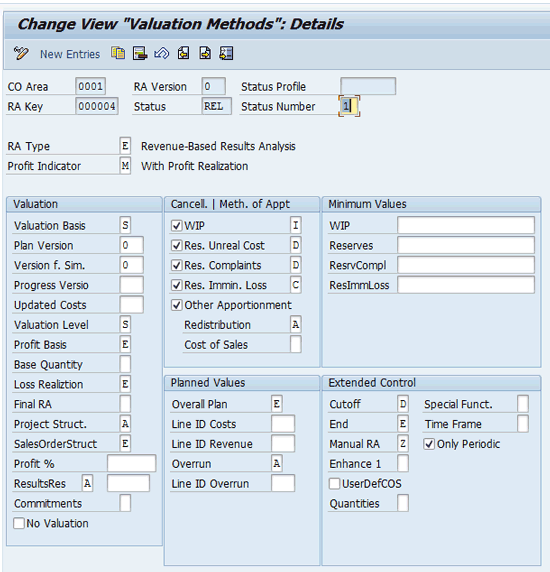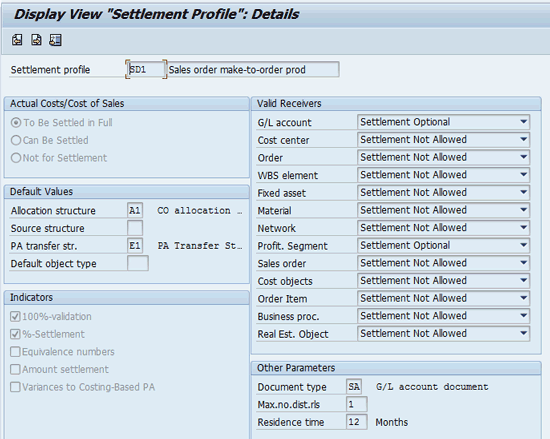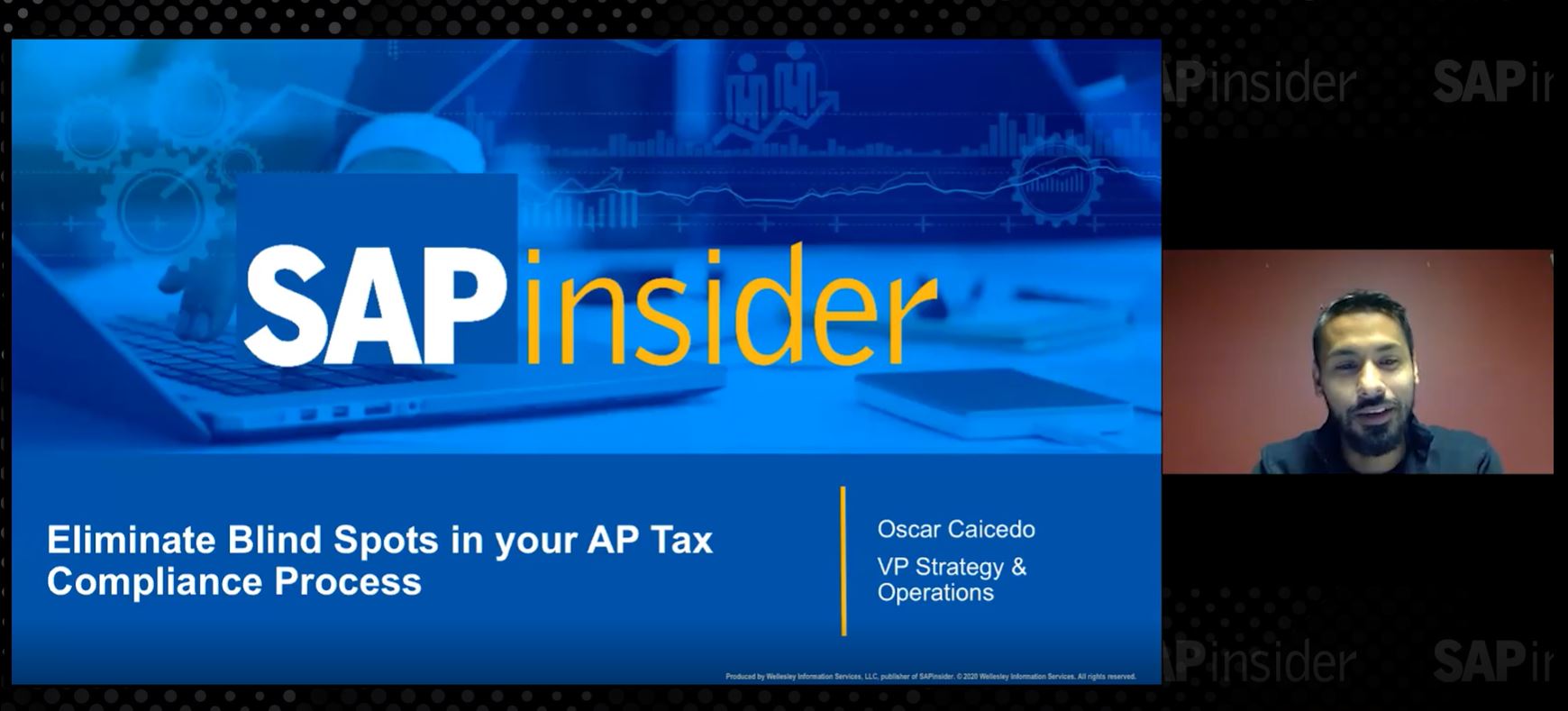Result Analysis functionality in SAP can help you meet the requirements of International Financial Reporting Standards (IFRS) and other accounting principles for recognizing revenues and costs for long-term contracts. Learn how to:
• Use some of the key Result Analysis methods in your SAP system to recognize revenues and costs in a make-to-order business scenario.
• Configure your SAP system to use the Result Analysis functionality
• Carry out the month-end processes for Result Analysis calculation and sales order settlement
Key Concept
Result Analysis is a period-end functionality available in the Cost Object Controlling component in an SAP system to calculate the results (profit or loss) and recognize the costs and revenues for a customer contract as per different accounting principles. Depending on the business scenario, Result Analysis can be performed for a sales order, work breakdown structure element, or internal order as a cost object. It also supports creation of work in process and reserves depending on the Result Analysis method selected.
Many manufacturing companies that operate with long-term contracts in a make-to-order (MTO) business scenario have some specific requirements for recognition of revenues and costs. These requirements are governed primarily by the relevant accounting principles, such as International Financial Reporting Standards (IFRS) or Generally Accepted Accounting Principles (GAAP), and also the conditions in which the business operates. I explain the key IFRS guidelines for revenue recognition and use of Result Analysis functionality in an SAP system to meet these requirements. The guidelines for revenue recognition are prescribed in International Accounting Standards (IAS), which form part of the body of IFRS.
Note
MTO is a business model or a manufacturing process in which the manufacturing activity starts only after the customer order is received and demand is confirmed. It represents a pull-type supply chain operation in which manufacturing is pulled by demand.
IFRS Guidelines for Revenue Recognition
According to IAS Standard 18.14, “revenue arising from the sale of goods shall be recognized when all of the following criteria have been satisfied:
- The entity has transferred to the buyer the significant risks and rewards of ownership of the goods;
- The entity retains neither continuing managerial involvement to the degree usually associated with ownership nor effective control over the goods sold
- The amount of revenue can be measured reliably;
- It is probable that the economic benefits associated with the transaction will flow to the entity; and
- The costs incurred or to be incurred in respect of the transaction can be measured reliably”
(Source: The IFRS Foundation, Technical Summary, IAS Revenue, 1 January 2012)
The correct representation of this revenue depends on circumstances, and different computations can all be correct depending on the business conditions. The IFRS Foundation does not provide any industry-specific rules, and the principle-based rules must be applied over all entities and industries. For service contracts, IFRS also requires a percentage of completion (PoC) method to be applied for revenue recognition. If PoC is not possible, no revenue can be recognized unless performance of service is completed.
In addition to the revenue recognition requirements, the matching principle requires that expenses are recognized in the same period as the related revenues. Meeting these requirements is a challenge, especially in contracts with a long lifetime involving sale of goods that are manufactured individually for specific customer orders. In such contracts, the amounts billed to a customer usually do not match revenue to be recognized, and the actual spending does not usually match the cost of sales.
Consider the case of a company operating in an MTO business model and entering into long-term contracts with its customers for the sale of goods, services, or a combination of both (as solutions). The contract contains a protocol that describes events, outcomes of events, and measures. The requirement is to recognize revenue along the events specified in the protocol.
Thus, revenue needs to be recognized when a customer obtains control of a service or a product. Control can be continuous or at a specific point of time. If control is transferred continuously, an output method (units completed), an input method (costs incurred), or the passage of time needs to be used to measure the amount of revenue to be recognized. Every performance obligation also has to be reviewed to determine if it has become onerous. A performance obligation is onerous when the value of the direct costs is higher than the expected performance obligation. In that case, excess must be recognized as a loss with a corresponding liability that is remeasured at each reporting period.
In short, in the case of such contracts, companies are required to measure the performance obligations based on various criteria, such as planned costs, actual costs, planned revenues, actual revenues, planned quantities, and actual quantities. Revenue and costs need to be recognized as and when the performance obligations are satisfied and also need to be delinked from the actual invoicing or billing events to customers.
The Result Analysis methods in an SAP system offer flexibility to automatically meet all these revenue and cost recognition requirements while also determining capitalized costs, work in process (WIP), and revenue reserves. I explain the key Result Analysis methods with an example and the business scenario in which they can be used.
The Result Analysis methods in an SAP system offer flexibility to automatically meet all these revenue and cost recognition requirements while also determining capitalized costs, work in process (WIP), and revenue reserves. I explain the key Result Analysis methods with an example and the business scenario in which they can be used.
Result Analysis: Basic Concepts and Methods
Result Analysis functionality helps you to analyze the results (profit or loss) for a particular customer contract using a particular cost object. In an MTO scenario, the cost object is the sales order. All revenues are collected on the sales order and at end of a period. Result Analysis functionality, based on the method selected, determines the profitability along with revenues and costs to be recognized in accounting. Result Analysis compares the planned and actual data (costs, revenues, quantities) to determine the revenues and cost of sales to be recognized. The adjustment postings can then be made to Profitability Analysis (CO-PA) and Financial Accounting (FI) by settlement of the sales order at period end. These adjustment postings are determined as follows:
- If the revenue recognized is higher than actual billings, a revenue in excess of billings position is created in the balance sheet.
- If the revenue recognized is lower than actual billings, a revenue surplus position is created in the balance sheet.
- If actual costs incurred are lower than cost of sales recognized, a WIP position is created on the balance sheet.
- If actual costs incurred are higher than cost of sales recognized, a reserve for unrealized costs is created on the balance sheet.
Although there are 13 preconfigured standard SAP Result Analysis methods for an MTO scenario with sales order as cost object, I explain three of the most commonly used methods using T accounts and conditions in which they can be used. Other preconfigured methods are less often used because they are less conservative. To understand the differences between each of these methods, I use the example of an MTO contract of four months for delivery of goods and services to a customer. The actual and planned costs and revenues for four monthly periods are shown in Figure 1. The revenue and costs listed in Figure 1 and in other figures are in US dollars.

Figure 1
Planned and actual revenue and costs for a contract
To compare each of these methods, the revenues and cost of sales that would be recognized using each of the Result Analysis methods for the same contract are shown in Figure 2. In this figure, 02, 03, and 09 are the predefined keys in the SAP system for each Result Analysis method listed.

Figure 2
Total revenue and costs recognized under different Result Analysis methods during four monthly periods
Method 1: Revenue Based without Profit Realization
The first method is the revenue-based approach without profit realization. In this method, only billed revenue is recognized. Therefore, Result Analysis does not calculate any profit as long as actual revenue is less than planned cost. This method allows you to follow conservative balance sheet guidelines because profit is not recognized unless it is realized. This method can be used in contracts for which the completion of performance obligations can only be confirmed with billing milestones. Until then, no revenue should be recognized.
Figure 3 shows that for Period 1, because there are no billings, no revenue is recognized in Result Analysis. The actual cost of 200 is capitalized to WIP in the balance sheet. The adjustment postings showing this capitalization of the actuals costs are highlighted in yellow in Figure 3. These postings are made when the Result Analysis data is settled to FI and CO-PA through settlement of the sales order.

Figure 3
Adjustment postings in period 1 under the revenue-based method
In period 2, actual billing of 300 takes place. When Result Analysis is executed, the actual revenue of 300 is recognized. Also the percentage of actual revenue to planned revenue is calculated and applied to actual costs to calculate cost of sales. The cost of sales to be recognized is 30 percent (300/1,000) of planned costs of 600 (i.e., 180). To achieve this, the adjustment postings of 80 are made when the sales order is settled to CO-PA and FI after Result Analysis (Figure 4).

Figure 4
Adjustment postings in period 2 under the revenue-based method
Note
The total planned revenue for four periods as shown in Figure 1 is 1,000.
In period 3, there is no additional billing, and therefore, no additional revenue is recognized with Result Analysis. However, an additional cost of 100 is incurred that you need to move to WIP in the balance sheet. Figure 5 shows the adjustment postings that need to be made when the sales order is settled to CO-PA and FI after Result Analysis.

Figure 5
Adjustment postings in period 3 under the revenue-based method
In period 4, the final billing of 700 is done. This entire amount is recognized as revenue. Also, because the contract is completed, the entire actual cost is recognized as cost of sales. All the adjustment postings done before are reversed with an entry of 220 (Figure 6). The sales order is technically closed with status TECO.

Figure 6
Adjustment postings in period 4 under the revenue-based method
Method 2: Cost-Based PoC
The second method is a cost-based PoC approach. In this method, a PoC is calculated based on actual costs as a percentage of planned costs. This percentage is applied to the actual revenue to arrive at revenue to be recognized. This method allows you to recognize revenues based on actual costs even if no revenues have been received. Thus, it shows unrealized profits. This method can be used for contracts in which the percentage of actual costs incurred to planned costs is a good indicator of completion of the performance obligations of the contract for recognizing revenues.
The summary in Figures 1 and 2 indicates that under this method, although there are no billings in period 1 and revenue of 333 is recognized. This is arrived at based on actual costs as a percentage of planned costs (i.e., 200/600 = 33%). This percentage is applied to the planned revenue of 1000 during Result Analysis calculation and posted to FI as revenue in excess of billings during settlement of sales order. The adjustment postings showing this recognition of revenue are highlighted in yellow in Figure 7.

Figure 7
Adjustment postings in period 1 under the cost-based PoC method
In period 2, billing of 300 is done, and an additional cost of 100 is incurred. During Result Analysis, the PoC of the actual costs to plan is calculated as 50 percent (i.e., 300/600) and applied to the planned revenues of 1,000 to arrive at the revenue to be recognized of 500. Adjustment postings for reversing the amount of revenue in excess of billings are made when the sales order is settled to FI at period end (Figure 8).

Figure 8
Adjustment postings in period 2 under the cost-based PoC method
In period 3, there is no billed revenue, but because additional actual costs of 100 are incurred, the PoC changes to 66 percent (i.e., 400/600). This percentage is applied to the planned revenues of 1,000 to arrive at revenue to be recognized of 660 at the end of period 3. The adjustment posting of revenue in excess of billings of 160 is made during settlement of the sales order to FI (Figure 9).

Figure 9
Adjustment postings in period 3 under the cost-based PoC method
In period 4, the final billing of 700 is done. This entire amount is recognized as revenue. Also, because the contract is completed, the entire actual cost is recognized as cost of sales. All the adjustment postings done before are reversed with an entry of 360 (Figure 10). The sales order is technically closed with status TECO.

Figure 10
Adjustment postings in period 3 under the cost-based PoC method
Method 3: Completed Contract
In the completed contract method, both costs and revenues are accrued until the end of the contract. Revenue and costs are recognized only at the end of contract. This method is suitable in contracts in which the performance obligations can only be satisfied at the end of contract. It uses conservative accounting practices.
In Figure 2 under this method, it can be seen that no costs and revenues are recognized for periods 1 (Figure 11), 2 (Figure 12), and 3 (Figure 13). The costs are capitalized in the WIP account in the balance sheet at the end of each of these periods. Similarly, revenues are also capitalized as revenue surplus to the balance sheet. The adjustment postings that happen at the end of each period when Result Analysis calculation is done and sales order is settled to FI are highlighted in yellow in Figures 11–14. At the end of period 4, these adjustment postings are reversed with the Result Analysis calculation and sales order settlement (Figure 14).

Figure 11
Adjustment postings in period 1 under the completed contract method

Figure 12
Adjustment postings in period 2 under the completed contract method

Figure 13
Adjustment postings in period 3 under the completed contract method

Figure 14
Adjustment postings in period 4 under the completed contract method
Note
In Figures 3–14, the numbers listed under the Costs (P&L) column correspond to the costs for periods 1–4 shown in Figure 1.
Key Configuration for Result Analysis
Now let’s see the key configuration and SAP transactions used to achieve revenue recognition using Result Analysis methods in MTO scenarios with the sales order as the cost object.
First, you create a Result Analysis key using transaction OKG1. Figure 15 shows the RA key 000004 defined for sales orders. This RA key can be defaulted in sales orders through the requirements class. Requirements classes are defined in the Sales and Distribution module and control all functions related to requirements in logistics. Requirement classes are assigned to requirement types, which are in turn assigned to item categories in sales orders. The requirement class acts as the basis for Result Analysis calculation of the sales orders at period end.

Figure 15
Define the RA key
Second, you need to define valuation method. This is the most important configuration because the valuation method controls the main parameters used for Result Analysis behavior and calculation for each of the Result Analysis methods.
Customizing for a valuation method can be done in transaction OKG3 either through Simplified Maintenance of Valuation Methods (Figure 16) or in Expert mode. Simplified maintenance offers limited options to influence the calculation, whereas Expert mode offers a wide range of options, but is complicated and confusing. Unless there are specific requirements to make modifications in standard pre-configured parameters for a Result Analysis method, I recommend that you use simplified maintenance of valuation methods.

Figure 16
Simplified maintenance of Result Analysis valuation methods
Some key fields that determine this calculation for revenue recognition in the simplified mode include these four:
- Result Analysis Method: The method used for Result Analysis based on the accounting requirements and business conditions. In my earlier examples, these are methods 02, 03, and 09.
- Status Control: Through this field, you can control revenue adjustments, inventories, and reserves so that they can be created only when the status of Released (REL) is set in the sales order. Also, the adjustment postings are reversed and final revenue is recognized at the end of contract when the status of sales order is set to Final billing (FNBL) or Technically completed (TECO).
- Profit Basis: This field determines the planned costs for a particular Result Analysis method. For a complex MTO scenario, SAP recommends to select the Sales Order Cost Estimate radio button as the basis for determining the planned costs using sales order BOM.
- Valuation Level: You can choose to have Result Analysis valuation at the totals level, which means that during Result Analysis, WIP and reserves are calculated at the entire sales order level and not at the individual line IDs or cost components, such as material, labor, or overhead. Alternatively, if you choose Valuation Analysis at the line ID level, the WIP and reserves are calculated separately for each line ID or cost component. SAP recommends that you do the valuation at the totals level.
Figure 17 shows the Expert mode for maintenance of valuation method. Expert mode offers separate calculation parameters to be maintained for Result Analysis, as per different statuses of sales order (REL, FNBL, or TECO).

Figure 17
Expert mode maintenance of Result Analysis valuation methods
Some of the key fields in Expert mode that influence the revenue recognition during Result Analysis are the RA Type and Profit Indicator, Valuation Basis, Profit Basis, and Final Result Analysis.
The RA Type and Profit Indicator fields in combination determine the type of result analysis and how these computations are done. Examples of RA types include:
- E: Revenue-based result analysis in which revenue is determined and adjusted
- Z: Reverse results, normally used with status TECO to reverse adjustment postings on completion of the sales order
Examples of Profit Indicators include:
- Q: The percentage of completion cost-driven revenue recognition in which the ratio of actual costs or planned costs determines progress and is used to compute recognizable revenue
- E, O, or M: Revenue-driven recognition with or without profit determination
- C: Completed contract in which revenue is booked as reserve and capitalized until the status is TECO for the sales order
The Valuation Basis field influences which costs and revenues are used in RA computation. Examples include:
- O: Planned costs and planned revenues are used
- I: Actual costs and actual revenues are used in computation
- S: The maximum of planned costs/cumulated actual costs and planned revenues
The Valuation Basis can be different for each stage of Result Analysis. During the initial stages with status Released (REL), the planning data of costs and revenues usually forms the basis of valuation. However, during the FNBL stage, all invoices have been billed, and therefore, actual revenues can be used to replace planned revenues as the basis for valuation. Similarly, during the TECO stage, because all costs are already booked, actual costs can be used as the basis for valuation instead of planned costs.
The Profit Basis field determines how the planned costs and revenues are computed for Result Analysis. SAP recommends taking the planned costs from the sales order cost estimate for complex MTO scenarios.
The Final Result Analysis indicator is usually set only for the TECO status of the sales order when all revenues and costs are incurred. All previous accruals and adjustment postings are reversed and the final profit is recognized.
Under the Result Analysis versions defined in transaction OKG2, mark the box for Transfer to Financial Accounting so that settlement to FI is executed (Figure 18).

Figure 18
Define Result Analysis versions
Define Line IDs
Line IDs help to structure the Result Analysis data according to requirements of FI. All the costs and revenues posted to a sales order can be grouped into various line IDs. For example, the line IDs break down the costs incurred for the order into direct materials costs, direct production costs, material overhead, and so on. These groups can be based on the structure of the cost of goods manufactured in the cost component structure (cost component split), for example. You define line IDs in customizing menu path Controlling > Product Cost Controlling > Cost Object Controlling > Product cost by Sales Order > Period End Closing > Results Analysis >Define Line IDs as shown in Figure 19.

Figure 19
Define line IDs for Result Analysis
Assign the line IDs to the relevant cost elements to which costs and revenues are posted on the sales order using transaction OKG5 (Figure 20). This assignment is based on the RA key and also identifies which of the line IDs are required to be capitalized, which are optional, and which cannot be capitalized. This means you specify which of the costs or revenues posted in sales order should be accrued and not be recognized as cost or revenue for the period in P&L. Based on the assignment selected in this configuration for capitalization or not of the cost/revenues represented by line IDs, Result Analysis categories are created. These Result Analysis categories are assigned in posting rules for identifying the P&L, Balance Sheet Accounts to which sales order is settled. Examples of RA categories created are WIPR (work in process with a requirement to capitalize costs), RUCR (reserves for unrealized costs), and WIPO (work in process with an option to capitalize costs).

Figure 20
Assign cost elements to line IDs for Result Analysis
I discuss these posting rules in detail in the next section.
Assign the RA Key and Line IDs
Use transaction OKG4 to assign the RA key and line IDs to secondary cost elements created for WIP, reserves, and revenues in Result Analysis (Figure 21) When Result Analysis transaction KKA3 is executed the values of WIP, reserves and revenues are stored in these secondary cost elements. These secondary cost elements are later maintained in the allocation structure in settlement profile as sender cost elements for settlement to CO-PA and FI. This is explained in detail later. It is important to note that RA transaction KKA3 saves the Result Analysis data for the sales order item number under secondary cost elements of cost element category 31. The values collected in these secondary cost elements are later used to post to FI during sales order settlement. In Figure 21, 610200 and 610300 are such cost elements.

Figure 21
Assign secondary cost elements to line IDs
Assign the P&L and Balance Sheet Accounts
Using transaction OKG8, assign the P&L and balance sheet accounts to which the Result Analysis data collected on the secondary cost elements should be settled in FI (Figure 22).

Figure 22
Assign GL accounts for settlement of Results Analysis data in FI
The settlement to sales order is made on the basis of the posting rules you define in this step plus the settlement profile explained in the next step. In this step, the link between the Result Analysis secondary cost elements and P&L, Balance Sheet Accounts to which the costs and revenues are to be settled is established with the RA category. The Results Analysis categories are created based on assignment of costs to line IDs as shown in Figure 20. These accounts are posted during settlement of the sales order after Result Analysis. These are the Contracts in Progress (CIP), revenue in excess of billings, WIP, balance sheet adjustment, and reserves account, which are explained with T accounts in an earlier section. The P&L accounts do not have a corresponding cost element since they post only in FI and ensure that revenue and profitability in FI matches with CO-PA.
Additionally, create a settlement profile with allocation structure, settlement cost elements, and PA (profitability analysis) transfer structure as shown in Figure 23. This can be created in customizing menu path Controlling > Product Cost Controlling > Cost Object Controlling > Product cost by Sales Order > Period End Closing > Settlement. This is required to settle the costs and revenues to CO-PA and WIP, and reserves to FI. The sender cost elements are the secondary cost elements posted with values in Result Analysis of the sales order (KKA3) while the receivers are the profitability segments in CO-PA and GL accounts in FI. In the settlement profile you define a range of control parameters required for settlement of sales order. The settlement profile can be defaulted in the sales order from the requirement class.

Figure 23
Define the Settlement profile for settlement of a sales order
The allocation structure primarily contains the details of sender cost elements, which in my example are the secondary cost elements of category 31 and whether the settlement should be done with original source cost elements or a separate settlement cost element.
In the PA transfer structure, you specify which cost element groups and variance categories are assigned to which value fields in CO-PA. After Result Analysis is carried out, the result analysis data for actual revenue, cost of sales can be settled to CO-PA based on this PA transfer structure. The PA transfer structure must contain all Results Analysis cost elements under which data used in Profitability Analysis is posted.
Result Analysis Calculation and Sales Order Settlement
The typical period-end closing steps for revenue and costs recognition for a sales order in an MTO scenario are as follows:
- During the period, all costs and revenues for the contract with the customer are booked using the sales order as the cost object — either directly or through process/production orders that are linked to sales orders.
- Process/production orders are settled to sales orders.
- Result Analysis computation is executed for sales orders in transaction KKA3 at the period end for a particular RA version (Figure 24). The RA computation creates additional line items (debit/credit) on secondary cost elements that are the base for revenue recognition. The calculation of the revenue, costs, WIP, and reserves is done based on the Result Analysis method configured in the RA key assigned to the sales order. The Result Analysis calculation can be executed as many times as required until the period is closed. Also, there is an option to manually process and change Result Analysis data calculated in this transaction. Note that no postings happen to FI at this stage.
- Settle the sales orders through transaction VA88 to CO-PA and FI to create the FI only postings for revenue recognition (Figure 25). The sales order settlement process does not use actual costs or revenues anymore. Instead, it uses the RA line items created during KKA3 with the secondary cost elements. Depending on the Result Analysis method selected, the accounting postings are made to CIP, revenue in excess of billings, WIP, balance sheet adjustment, or the reserves account. These are only FI postings and there are no corresponding Managerial Accounting (CO) documents. The CO view is already provided by the Result Analysis postings made in transaction KKA3.

Figure 24
Result Analysis for a sales order executed through transaction KKA3

Figure 25
Sales order settlement to FI and CO-PA
Kedar Muzumdar
Kedar Muzumdar is an SAP-certified FICO consultant and a chartered accountant (CA) from the Institute of Chartered Accountants of India. He has been working as a principal consultant on SAP implementation, upgrade, and support projects involving the new GL, AP, AR, material ledger, product costing, cost object controlling, and profitability analysis for the past nine years.
You may contact the author at kedar19792001@gmail.com.
If you have comments about this article or publication, or would like to submit an article idea, please contact the editor.

























